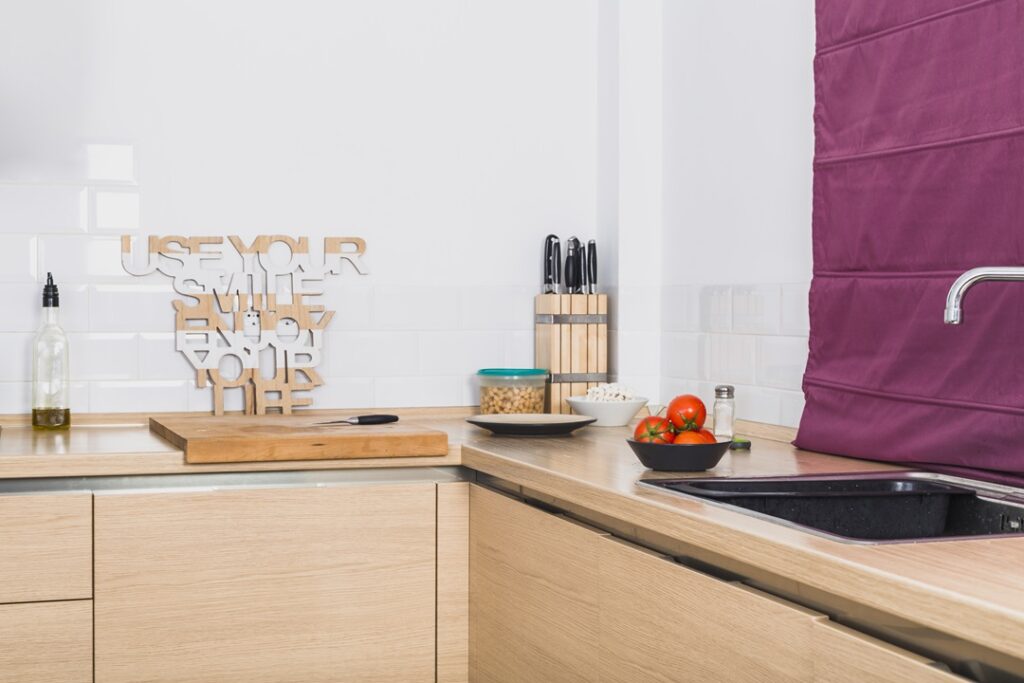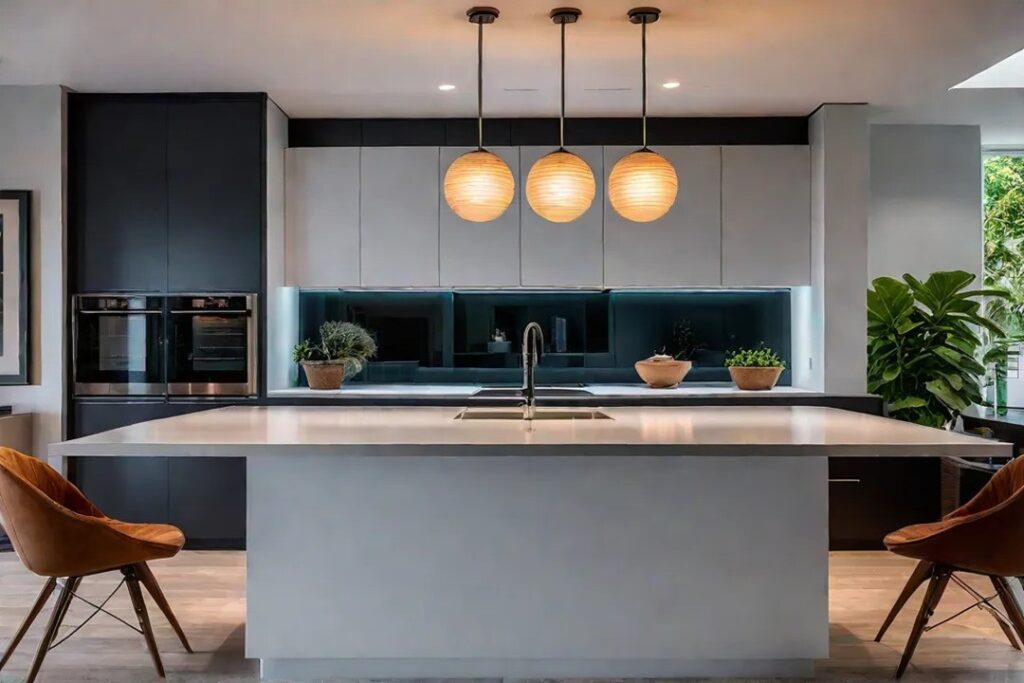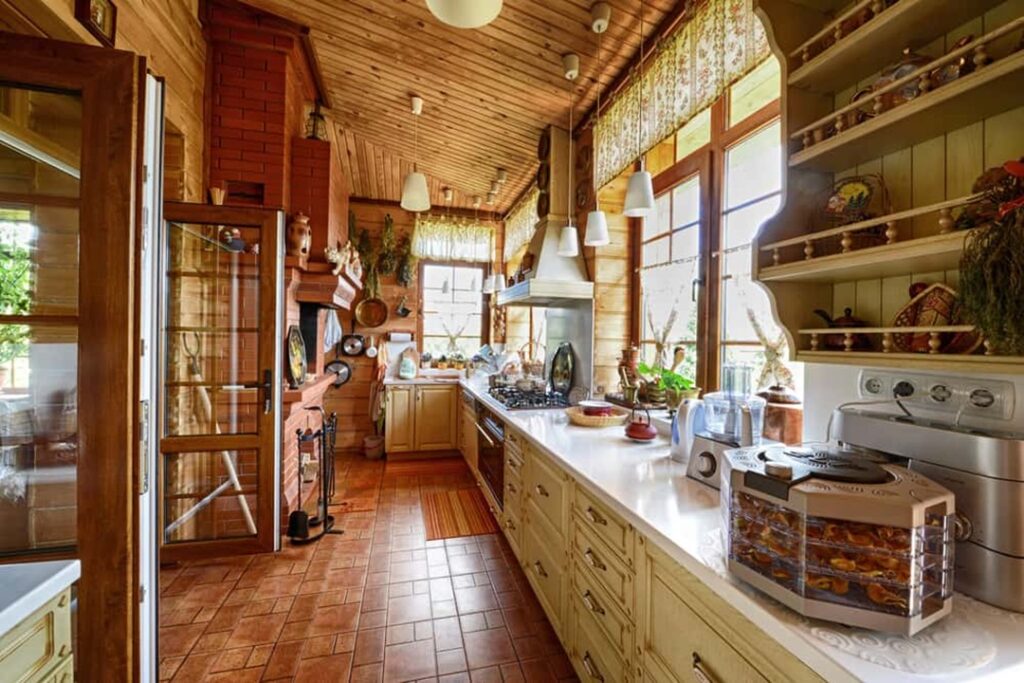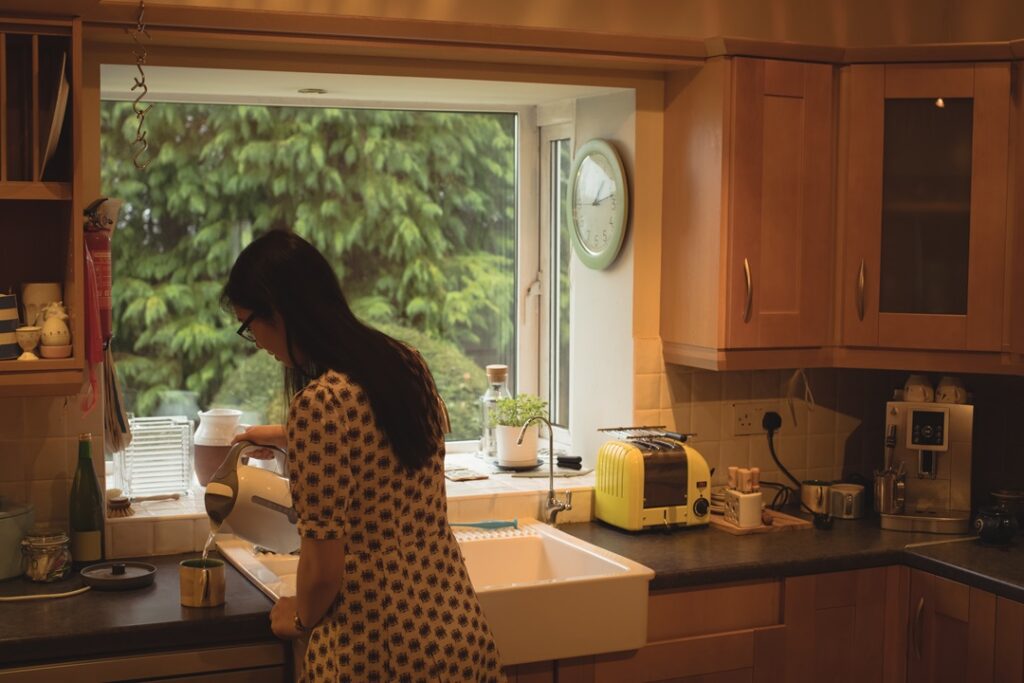Open Shelving vs. Cabinets in Kitchen: Pros and Cons
The kitchen. It’s the heart of the home, the battlefield of culinary creations, and the stage for countless family gatherings. But a crucial battle brew when designing this sacred space is open shelving versus cabinets. Fear not, fellow home chefs and design enthusiasts! This blog will unveil the secrets of both contenders, helping you choose the champion for your dream kitchen. We’ll explore the benefits and drawbacks of open shelving and cabinets, navigate the world of mixed storage solutions, and ultimately empower you to create a kitchen that reflects your style and functionality needs. So, grab your metaphorical spatula, and let’s dive in! The Allure of Open Shelving: Lightness and Display Open shelving has become a popular trend in recent years, creating a sense of openness and visual lightness in the kitchen. Here’s what makes it so appealing: Easy Access: Open shelves allow you to grab ingredients, dishes, or cookware quickly and easily, without the need to open cabinet doors. This is especially convenient for frequently used items. Airy and Spacious Feel: Open shelves visually expand the space, making a small kitchen feel larger and brighter. Light can flow freely, creating a more open and inviting atmosphere. Display Potential: Open shelves are a great way to showcase your favorite dishes, vintage kitchenware, or decorative items. It allows you to personalize your kitchen and add a touch of your unique style. Cost-Effective: Compared to cabinets, open shelves are generally less expensive. This can be a budget-friendly option, especially for larger kitchens requiring a lot of storage. Considering the Drawbacks: Maintenance and Clutter While open shelving offers undeniable benefits, there are also some downsides to consider: Constant Upkeep: Open shelves require more frequent cleaning and maintenance. Dust, grease splatters, and food residue can accumulate easily, demanding regular wiping and organizing. Limited Storage Capacity: Compared to cabinets, open shelves offer less storage space. They are not ideal for bulky appliances, pots, and pans, or large quantities of food items. Visual Clutter Concerns: Open shelves can easily become cluttered if not meticulously organized. Keeping them neat and visually appealing requires conscious effort and a curated selection of items. Susceptibility to Damage: Open shelves leave your dishes and cookware more vulnerable to dust, spills, and even accidental breakage. This might be a concern for more delicate items. The Enduring Appeal of Cabinets: Organization and Protection Traditional cabinets remain a popular choice for kitchens, offering a clean and organized look with plenty of storage space. Here’s what makes them a reliable option: Concealed Storage: Cabinets hide away clutter and provide a more streamlined aesthetic. This can be especially beneficial if you have a lot of kitchenware or prefer a minimalist look. Protection from Dust and Grease: Unlike open shelves, cabinets keep your dishes and cookware safe from dust, grease splatters, and food residue. This is ideal for storing delicate items or seldom-used appliances. Ample Storage Capacity: Cabinets offer significantly more storage space than open shelves. They can easily accommodate large appliances, pots, pans, and bulk food items, keeping your kitchen clutter-free. Versatility and Functionality: Cabinets come in various sizes, styles, and configurations, allowing you to customize your storage solution to fit your specific needs. Weighing the Options: Finding the Perfect Fit There’s no single right answer when it comes to open shelves versus cabinets. The best choice depends on your individual needs and preferences. Here are some factors to consider: Lifestyle: If you’re a busy cook who prioritizes quick access to frequently used items, open shelves might be a good choice. On the other hand, if you value a clean and organized look and have a lot of kitchenware, cabinets might be ideal. Aesthetics: Consider your desired kitchen design. Open shelves create a light and airy feel, while cabinets offer a more traditional and streamlined look. Choose the option that complements your overall design preferences. Storage Needs: Evaluate how much storage space you require. If you have limited counter space and a lot of kitchen essentials, cabinets might be necessary. Striking the Balance: Combining Open Shelving and Cabinets Why not have the best of both worlds? Many kitchens incorporate a combination of open shelving and cabinets, creating a functional and visually appealing space. Here’s how to achieve this: Open Shelves for Display: Use open shelves to display your favorite dishes, decorative items, or frequently used cookbooks. Cabinets for Essentials: Utilize cabinets for bulkier appliances, pots, pans, and food items that don’t require immediate access. Strategic Placement: Position open shelves strategically, like above the sink or next to the stovetop, for easy access to everyday items. Ultimately, your dream kitchen reflects your personality and cooking style. By understanding the pros and cons of open shelving and cabinets, you can create a storage solution that is both functional and aesthetically pleasing.
Open Shelving vs. Cabinets in Kitchen: Pros and Cons Read More »









